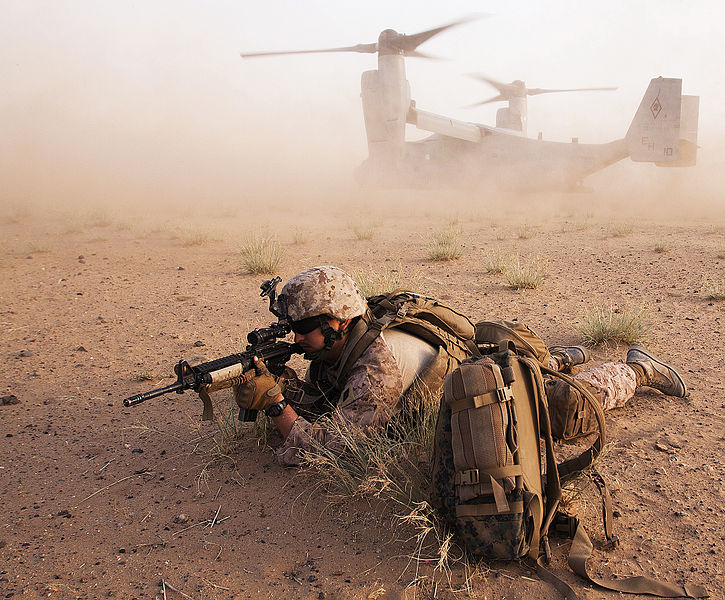Trinquier, Roger. Modern Warfare: A French View of Counterinsurgency. Translated by Daniel Lee. London: Pall Mall Press, 1964.
INTRODUCTION
Modern Warfare: A French View of Counterinsurgency is a book on military strategy written specifically for the French armed forces that fought in the Algerian War from 1954 to 1962. This book not only served as a theoretical and practical guide for the French troops to counter insurgent attacks initiated by the National Liberation Front (FLN) in Algeria, but also laid the groundwork for modern counterinsurgency theories. The message it sent was clear: the nature of warfare had changed fundamentally, and a new mindset and skillset were required to adapt to the new conflict environment.
AUTHOR
The author of the strategy manual, Roger Trinquier, is notable for his achievements and contributions to the development of counterinsurgency principles. He was born to a peasant family in France in 1908 and completed his military studies at the military academy of Saint-Maixent. Trinquier’s military career was mainly based overseas, where he assumed vital roles in the French concessions in China, French Indochina (present-day Vietnam, Laos, and Cambodia), and finally, in Algeria. He had the chance to refine his knowledge of counter-guerrilla tactics during his tenure in Indochina and Algeria. During the First Indochina War, which lasted from 1946 to 1954, Trinquier served as a commander in the 2nd Colonial Commando Parachute Battalion and Groupement de Commandos Mixtes Aéroportés (GCMA) to wage combat against the Viet Minh, a guerrilla force that sought Vietnam’s independence from French colonial rule. The lack of coordination between Paris and its forces in Vietnam resulted in bitter and protracted fighting there. In addition, the First Indochina War marked the early stage of Trinquier’s development in the unconventional, strategic approach towards implementing counter-terrorism measures. After France’s retreat from Southeast Asia, he was redeployed to French Algeria, where he rose to prominence in the controversial Battle of Algiers against the FLN and the formation of Dispositif de Protection Urbain (DPU), a defense unit that incorporated the mass civil population. Throughout the Algerian War, from 1954 until 1962, Trinquier constantly switched roles between being a commanding officer of combat units, and the director of a military school.
BACKGROUND
The military guide was written and published as the Algerian War raged on. This war is often regarded as a classic case study in the process of decolonization, referring to an intense post-WWII period during which colonies claimed independence from European powers, in some cases through violent struggle. The Algerian War marked the end of French colonial occupation in Algeria that began in 1830, and subsequently led to the collapse of the fragile French Fourth Republic.
The outbreak of the conflict can be interpreted from three angles: political, economic, and social dimensions. These are represented respectively by the colonials’ urge to establish sovereignty, their resentment against the weakening of economic trade ties to the French metropole, and their frustration with France’s failure to promise equality for all its colonized citizens. In retaliation for the brutal French crackdown after the Sétif Massacre that resulted in the death of over 100 European residents on May 8th, 1945, the local Algerian insurgents, mostly led by the FLN, the sole constitutionally legitimate political party, officially started the war on November 1st, 1954. They initiated the Toussaint Rouge, a series of deadly attacks targeting the French military across Algeria. After its defeat in Indochina, France was determined not to lose another colonial possession, this time in Algeria. Therefore, the French central government immediately ordered a brutal crackdown on the FLN by increasing the size of the colonial armed forces to 40,000 troops to contain the struggle. However, the “hit and run” tactics adopted by the FLN proved to be efficient and successful in bleeding the French. In addition to the French failure to regain the initiative on the battlefield, the emergence of domestic unrest in France itself undermined its control over its colonies, leading to the fall of the Fourth Republic. Sparked by the so-called pieds-noirs – white French colonists living in Algeria – along with several French army commanders who called for the replacement of the impotent Fourth Republic by a new strong executive branch under the command of General Charles De Gaulle in 1958, the French parliament eventually relented.
ANALYSIS
In Modern Warfare, Trinquier presents a two-stage strategic approach: learning and adapting. To successfully counter insurgent movements, the French armed forces must thoroughly understand the complexity of insurgency and then incorporate the key fundamentals into their military agenda.
The key to comprehending insurgency doctrines is to know the major difference between conventional and insurgent conflicts. Conventional warfare, by definition, is interstate combat over a given terrain, with belligerent groups appearing in highly-centralized military units characterized by standard uniforms and heavy armament. In the traditional sense, military capability plays a central role in determining victory on the battlefield. However, insurgents employ an entirely different form of fighting strategy. Unlike traditional warfare, the primary objective of the insurgent groups is not to capture a piece of land but rather to challenge the dominant ruling order. Since the insurgents have a relatively weak military strength and a loose structure compared to the centralized, well-equipped government forces, this end is achieved primarily through terrorism — hit-and-run attacks that mainly target the defenceless civilian population. Those random attacks tend to alienate the populace from the state as the citizens start to lose faith in the state’s ability to guarantee the safety of its own citizens. As a result, the loss of public trust in the government forces confers legitimacy upon the insurgent groups and thus severely undermines the state’s credibility, leading to political concessions.
Given the hybrid nature of irregular warfare, Trinquier believes that the most effective way to fight an insurgent is to use his own weapons against him. In this case, despite having overwhelming superiority in the conventional military forces of the war, the French soldiers still must adapt themselves to the new form of warfare by making use of the irregular and asymmetric means employed by the FLN. As the multidimensional manipulation of the Algerian populace serves as the backbone of the entire FLN initiative, Trinquier suggests using the same method to protect the noncombatant population. The mission would have to fully integrate ideological, social, religious, and economic components at all levels of society in order to reinforce state legitimacy if the mission was to meet with success.
In the modern context, the 3-D counterinsurgency framework (Defence, Development, and Diplomacy) implemented by the Canadian forces in Afghanistan bears a strong resemblance to Trinquier’s concepts. The collaborative paradigm puts forth a whole-of-alliance approach by adding a human dimension to the agenda. The three pillars of the framework are closely intertwined and each represents a critical aspect of dealing more effectively with the modern global security reality: defence refers to military operations; development represents efforts to strengthen local political, social, and economic foundations; and the acquisition of local knowledge characterizes diplomacy. By blending civilian and military efforts together across different functional fields, the 3-D model allows the state to maximize its chance of winning the insurgent warfare.
CONCLUSION
The theories of counterinsurgency proposed by Trinquier are rather abstract and might be difficult for troops to apply to real-world combat situations. However, it furnishes policymakers with a comprehensive strategy for waging asymmetrical warfare. In the 1960s, it served as a guide for French forces to meet the multidimensional nature of the Algerian anticolonial rebellion, and while French forces ultimately could not prevail in that conflict, Modern Warfare laid the groundwork for current counterinsurgency campaigns around the globe. It remains for historians to determine whether these have met with greater success than their forerunners.
Cover Image: “Operation Black Dawn: Coalition forces disrupt narcotics trafficking in Helmand” (2011), by DVIDSHUB via Flickr. Licensed under CC BY 2.0
Disclaimer: Any views or opinions expressed in articles are solely those of the authors and do not necessarily represent the views of the NATO Association of Canada.




